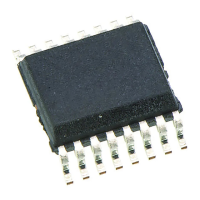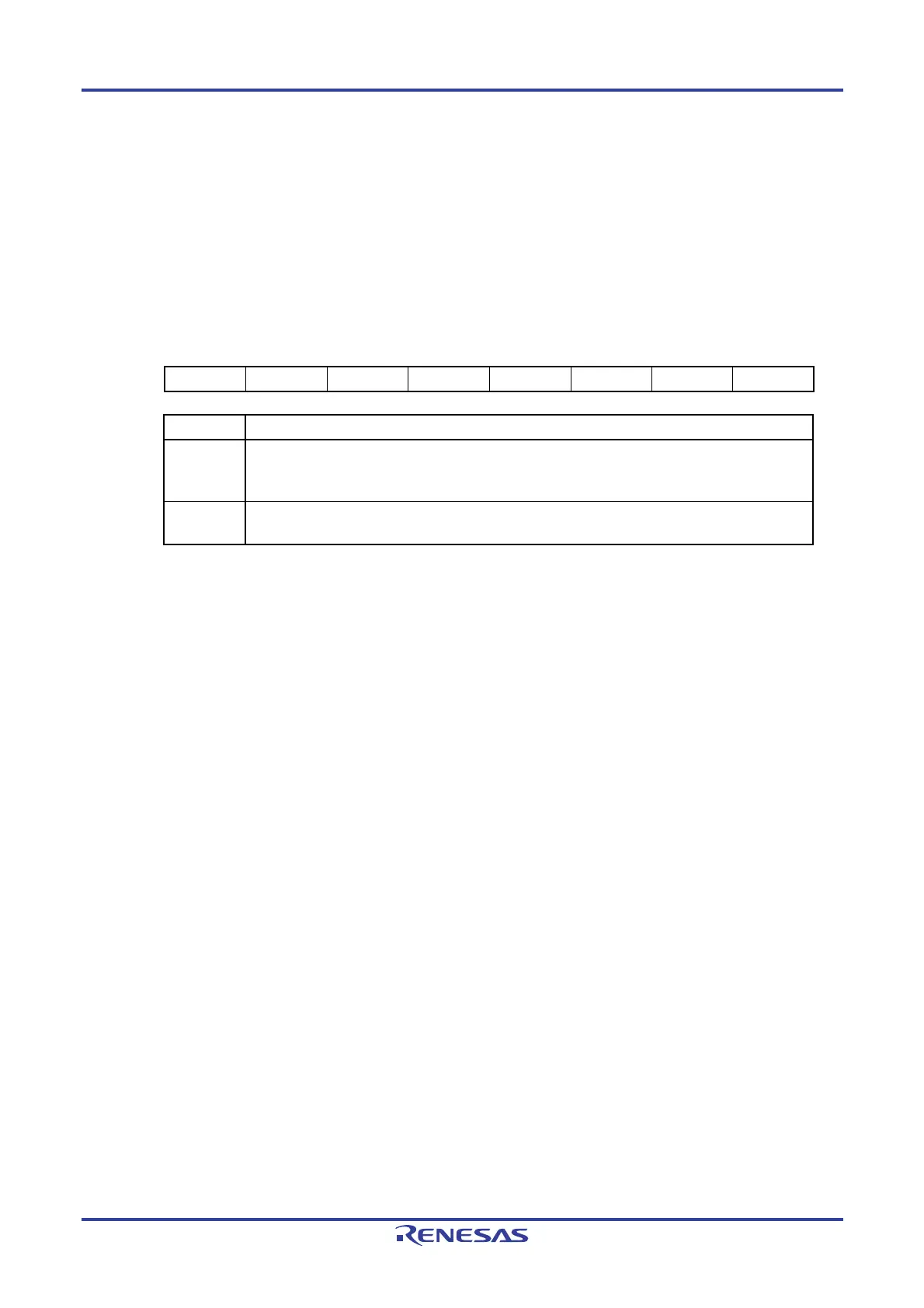RL78/G10 CHAPTER 12 SERIAL ARRAY UNIT
R01UH0384EJ0311 Rev. 3.11 283
Dec 22, 2016
12.3.1 Peripheral enable register 0 (PER0)
PER0 is used to enable or disable supplying the clock to the peripheral hardware. Clock supply to a hardware macro
that is not used is stopped in order to reduce the power consumption and noise.
When serial array unit 0 is used, be sure to set bit 2 (SAU0EN) of this register to 1.
The PER0 register can be set by a 1-bit or 8-bit memory manipulation instruction.
Reset signal generation clears the PER0 register to 00H.
Figure 12-3. Format of Peripheral Enable Register 0 (PER0)
Address: F00F0H After reset: 00H R/W
Symbol <7> <6> <5> <4> 3 <2> 1 <0>
PER0 TMKAEN
Note
CMPEN
Note
ADCEN IICA0EN
Note
0 SAU0EN 0 TAU0EN
SAU0EN Control of serial array unit 0 input clock supply
0
Stops supply of input clock.
• SFR used by serial array unit 0 cannot be written.
• Serial array unit 0 is in the reset status.
1
Enables input clock supply.
• SFR used by serial array unit 0 can be read/written.
Note 16-pin products only.
Cautions 1. When setting serial array unit 0, be sure to set the following registers while the SAU0EN
bit is set to 1 first. If SAU0EN = 0, control registers of serial array unit 0 become default
values and writing to them is ignored (except for the noise filter enable register 0
(NFEN0), input switch control register (ISC), port output mode register 0 (POM0), port
mode register 0 (PM0), port mode control register 0 (PMC0), and port register 0 (P0)).
• Serial clock select register 0 (SPS0)
• Serial mode register 0n (SMR0nH, SMR0nL)
• Serial communication operation setting register 0n (SCR0nH, SCR0nL)
• Serial data register 0n (SDR0nH, SDR0nL)
• Serial flag clear trigger register 0n (SIR0n)
• Serial status register 0n (SSR0n)
• Serial channel start register 0 (SS0)
• Serial channel stop register 0 (ST0)
• Serial channel enable status register 0 (SE0)
• Serial output enable register 0 (SOE0)
• Serial output level register 0 (SOL0)
• Serial output register 0 (SO0)
• Serial clock output register 0 (CKO0)
2. Be sure to clear the following bits to 0.
10-pin products: Bits 1, 3, 4, 6, and 7
16-pin products: Bits 1 and 3

